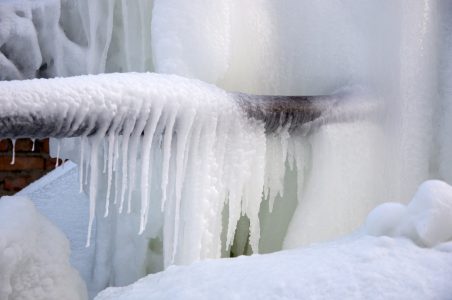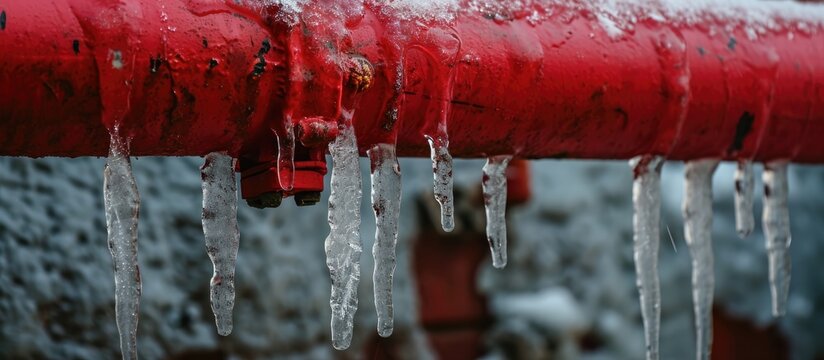Avoiding Frozen Pipes: Effective Tips for Cold Weather
Avoiding Frozen Pipes: Effective Tips for Cold Weather
Blog Article
Listed here down the page yow will discover a bunch of brilliant news on the subject of Prevent Frozen Pipes .

Cold weather can ruin your pipes, specifically by freezing pipes. Here's just how to avoid it from occurring and what to do if it does.
Introduction
As temperatures decline, the threat of frozen pipes rises, potentially causing expensive fixings and water damages. Understanding how to stop frozen pipelines is vital for house owners in cool climates.
Recognizing Frozen Pipelines
What triggers pipes to freeze?
Pipes ice up when exposed to temperatures listed below 32 ° F (0 ° C) for prolonged durations. As water inside the pipelines ices up, it broadens, putting pressure on the pipeline wall surfaces and possibly causing them to burst.
Risks and damages
Icy pipes can lead to supply of water disturbances, home damage, and expensive repair services. Ruptured pipelines can flood homes and trigger considerable structural damages.
Signs of Frozen Pipeline
Determining frozen pipelines early can avoid them from breaking.
Just how to identify frozen pipelines
Search for reduced water circulation from taps, uncommon smells or sounds from pipelines, and visible frost on revealed pipelines.
Avoidance Tips
Shielding vulnerable pipelines
Cover pipes in insulation sleeves or make use of heat tape to secure them from freezing temperature levels. Concentrate on pipelines in unheated or outside locations of the home.
Heating techniques
Maintain indoor spaces properly warmed, specifically locations with plumbing. Open up cupboard doors to permit cozy air to distribute around pipelines under sinks.
Safeguarding Outdoor Pipes
Garden hose pipes and outside faucets
Separate and drain yard hose pipes prior to winter season. Install frost-proof faucets or cover outside faucets with protected caps.
What to Do If Your Pipelines Freeze
Immediate actions to take
If you presume icy pipelines, maintain faucets open up to relieve stress as the ice thaws. Use a hairdryer or towels soaked in hot water to thaw pipes slowly.
Long-Term Solutions
Architectural changes
Take into consideration rerouting pipelines far from exterior walls or unheated locations. Add added insulation to attics, cellars, and crawl spaces.
Updating insulation
Purchase top notch insulation for pipelines, attics, and walls. Appropriate insulation assists maintain consistent temperatures and lowers the threat of frozen pipelines.
Final thought
Preventing icy pipelines requires proactive measures and fast actions. By recognizing the causes, indications, and preventive measures, homeowners can shield their plumbing throughout winter.
5 Ways to Prevent Frozen Pipes
Drain Outdoor Faucets and Disconnect Hoses
First, close the shut-off valve that controls the flow of water in the pipe to your outdoor faucet. Then, head outside to disconnect and drain your hose and open the outdoor faucet to allow the water to completely drain out of the line. Turn off the faucet when done. Finally, head back to the shut-off valve and drain the remaining water inside the pipe into a bucket or container. Additionally, if you have a home irrigation system, you should consider hiring an expert to clear the system of water each year.
Insulate Pipes
One of the best and most cost-effective methods for preventing frozen water pipes is to wrap your pipes with insulation. This is especially important for areas in your home that aren’t exposed to heat, such as an attic. We suggest using foam sleeves, which can typically be found at your local hardware store.
Keep Heat Running at 65
Your pipes are located inside your walls, and the temperature there is much colder than the rest of the house. To prevent your pipes from freezing, The Insurance Information Institute suggests that you keep your home heated to at least 65 degrees, even when traveling. You may want to invest in smart devices that can keep an eye on the temperature in your home while you’re away.
Leave Water Dripping
Moving water — even a small trickle — can prevent ice from forming inside your pipes. When freezing temps are imminent, start a drip of water from all faucets that serve exposed pipes. Leaving a few faucets running will also help relieve pressure inside the pipes and help prevent a rupture if the water inside freezes.
Open Cupboard Doors
Warm your kitchen and bathroom pipes by opening cupboards and vanities. You should also leave your interior doors ajar to help warm air circulate evenly throughout your home.

Hopefully you enjoyed our excerpt about 6 Ways to Prevent Frozen Pipes. Thanks so much for taking the time to browse our blog post. Don't hesitate to pause to distribute this blog posting if you enjoyed reading it. We value reading our article about Winter Plumbing Precautions: Preventing Frozen Pipes.
This Site Report this page